|
|
Advertisement:
|
|
Intel Clarkdale |
|
Join the community - in the OCAU Forums!
|
How We Tested, Vital Readings
HOW WE TESTED
Our Clarkdale test sample is an i5 661. This processor runs the GMA HD at 900 MHz. Our first task was naturally to find out how the new integrated graphics solution is performing. This was done with a H55 chipset board, the Intel DH55TC. We guess though that most of our readers are falling into the category “enthusiast” and will use their Clarkdale processor with a P55 board and discrete graphics, ignoring the built-in graphics core. Therefore after testing the integrated graphics performance, we plugged the 661 CPU into our P55 based Intel DK55KG motherboard and continued our test program with this set-up.
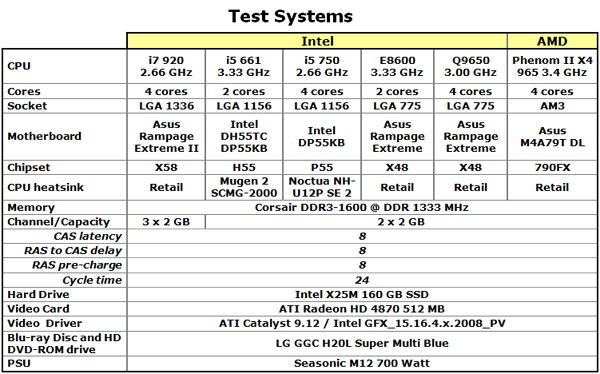
We are comparing the 661 with the product it is replacing: the E8600. Both CPU have 2 cores and are running at 3.33 GHz. In order to show how Clarkdale is faring against popular previous and current quad-core CPUs we included the Q9650, i5 750, and i7 920 as well, and for further comparison an AMD Phenom II X4 965.
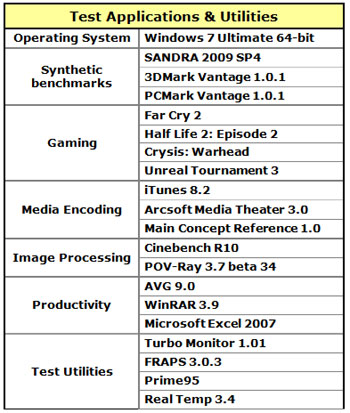
A few words about the DH55TC motherboard: It’s a micro ATX form factor motherboard based on the new H55 chipset. The board has VGA, DVI-D and HDMI ports, but not yet the new “Display Port”. The board allows using discrete graphics as well and has 1 PCIe x16 connector for this purpose. The board is only working with memory that is running with 1.5 volt at 1333 MHz. The DH55TC was running stable and well performing with no issues. It comes with much reduced overclocking functions. It allows nothing more than changing the processor host frequency; neither voltages nor memory settings can be changed. I don’t know whether this is related to the design of the DH55TC or the chipset itself.
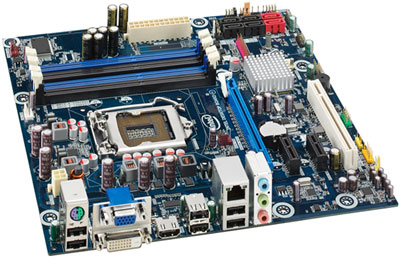

VITAL READINGS
The latest version of CPU-Z recognizes the new CPU properly as i5 661 “Clarkdale” running at 25x 133 MHz = 3.33 GHz. The multiplier range is given with 9x to 25x. When the system is idling, “Enhanced Intel Speed Step” (EIST) drops the multiplier down to 9x 133 MHz= 1200 MHz and the core voltage to around 0.85V.
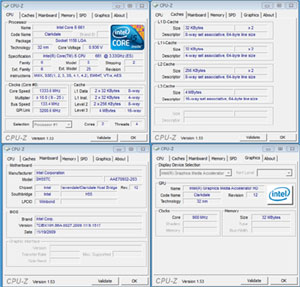
With “Nehalem” Intel introduced “Turbo Mode”. This technology allows the processor core to opportunistically and automatically run faster than its rated operating frequency if it is operating below power, temperature and current limits. BIOS and the operating system can enable or disable TM. Intel has different versions of TM implemented: The i7 900 series is boosted by a maximum of 2 speed bins, the i7 800 series is boosted by a maximum of 5 speed bins, and the i5 700 by a maximum of 4 speed bins. Now, here is the bad news: We found that the i5 600 series has the tamest TM version which adds only a maximum of 2 speed bins. “TMonitor” confirms that 2 speed bins are added and nothing more. The maximum frequency with TM is therefore 27 x 133 MHz = 3.60 GHz.
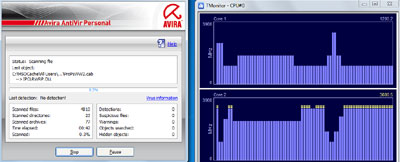
We assume the reduction to only 2 speed bins is due to thermal considerations. After all, the i5 600 processors are currently the highest clocked Nehalem CPUs and they have additionally a GPU in the package. By the way, in case of the mobile i5 600 versions (with “M” moniker), TM is also boosting the GPU frequency. The desktop version, the one we are testing here, gets only the CPU frequency leveled up by TM. As already mentioned, the i3 500 series doesn’t have TM at all.
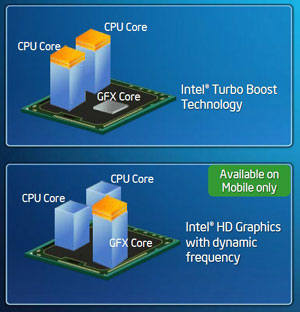
The 32nm Clarkdale processors have a “thermal design power” (TDP) of 73 Watt. The only exception is the 661 with a TDP of 87W. This is apparently because of the higher clocked GPU, but still less than the 95W the 45nm Lynnfield core is consuming and much less than Bloomfield’s 130 Watt. We are measuring the power consumption at the wall outlet. This way we get total system consumption which is of course higher than the CPU’s consumption alone.
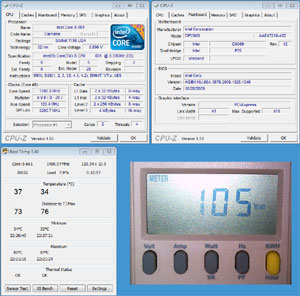 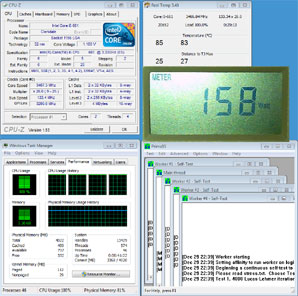
The 661 power readings are amazing. When idling the 661 (running with the H55 chipset) does not consume more than 105 Watt and under full load with 4 threads of Prime 96 running not more than around 160 Watt. Even under full load the i5 661 consumes less power than an 920 system that is just idling. Running the 661 with a P55 board and a HD 4870 we measured around 25 Watt more in idle, in total 130 Watt, which is still lower than for any other CPU we have tested so far. Also: Keep in mind that the 661 has the highest TDP among current Clarkdale CPU. The other Clarkdale i3 and i5 versions should therefore consume even less power. Clearly, the 32nm manufacturing technology pays off.
The 661 comes with the same flimsy retail heatsink we know already from Lynnfield. Frankly speaking, this “thing” is an abomination. Even at default frequency the 661 reaches soon 85C with this “solution” when running four threads of the Prime95 torture test. I recommend changing the retail heatsink immediately to a 3rd party offering, regardless of what you do with your system.
|
|
Advertisement:
All original content copyright James Rolfe.
All rights reserved. No reproduction allowed without written permission.
Interested in advertising on OCAU? Contact us for info.
|

|


